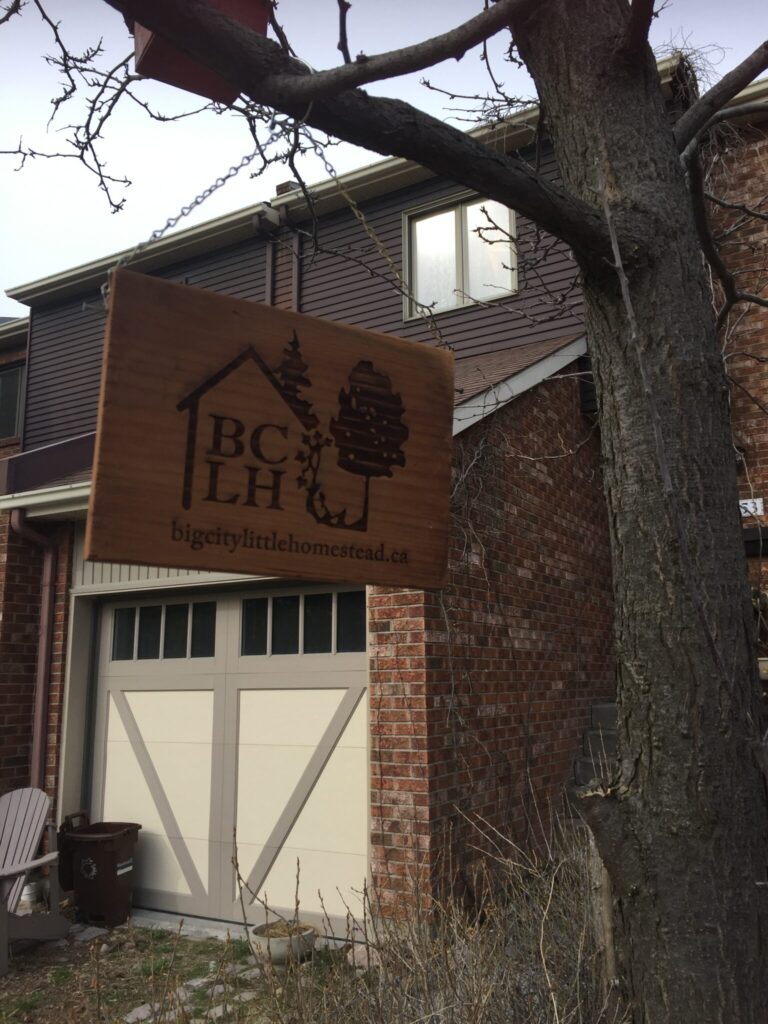You can find many examples of bird houses online, and here I found a decent pattern for a “one board” bird house (seen in the first image below). I had off-cuts of a bunch of old fence boards that I wanted to use, and the measurements worked.
This project shows you how to build a bird house in about 45 minutes (with all the tools), but just like with pancakes, my first version is less than perfect. You’ll learn what to watch out for when starting out with perfectly good-but-used materials. If you have a slightly more meticulous approach, you will end up with a prettier result.
What you’ll need:
- a brad nail gun or a hammer
- finishing nails to put it together and nail sink (a bigger, stronger nail will do)
- two round, smooth nails (not spiral) or else two short deck screws for the door hinge (deck screws are weather-resistant)
- another deck screw to close the front (between nesting seasons, it’s your job to clean the birdhouse out – also an interesting and informative project!), and the Robertson driver for it
- a drill with a bit for the deck screws, and a spade bit ranging from 1-⅛” to 1-½,” depending on the bird you want to attract,
- two spiral nails to fix the birdhouse to the top of a post,
- and a post, either a round fence post or a 4×4 deck post
- either implanted into the ground, held to /as part of a fence by some support, or anchored in a cement deck block with a wood shim.
Use the chart from this post’s header image (found on the Internet Wayback Machine archive from TrueValue Hardware) to determine the sizes you’ll need depending on species of bird. The box size, the height of the door hole and the diameter of the door influences what kind of bird might take up residence.
You can also buy Bird House Portal Protectors to prevent other animals from pecking or excavating the door; they indicate the diameter of aperture by naming each size after a bird (wren, chickadee, nuthatch, Eastern Bluebird; I chose ‘nuthatch’ for the birdhouses I dedicated to the house sparrows).
The birdhouse I’m making today could, if I lived in a more meadowed neighbourhood, house bluebirds. Instead, I’m looking forward to welcoming a pair of chickadees and also some house sparrows, who already live here.
Also note: there’s no peg like one often sees with store-bought birdhouses. Why not? Well, unfortunately, that peg provides a nice roost for predators. So don’t add a peg to your birdhouse designs, and if you have a house that has one, research the species of bird for the birdhouse (tree swallows seem to like having a front porch on their nesting boxes…) and consider cutting it off.





























Although not “perfect” according to my mistakes, it’s absolutely good enough to house a pair of birds. I’ll do a better job with the next nest box, which I’ll install in a publicly viewable place.
Speaking of which: If you live in an apartment, you could try installing it on your balcony, like in the last image in the photo gallery here (a successful nest, after a delay!) or on your building’s rooftop.
You can also search within a sight-line of one of your windows for a signpost, and hang it at a good height. As you can see from the chart, you can go as high as 15 feet. Indeed, hanging bird houses is in the public interest, as people will enjoy seeing it, especially if it gets used.

At the end – or very beginning – of the season, you could clean the nest box by taking out the old nest. Then you get to see how much work they put into it, and what materials they use (moss, animal fur, plant matter– I think I even see some of my own hair in this one). You’ll also get to see any non-viable eggs and young, as the parents may not have been able to discard them, as they do for shells and poop.

Finally, come winter, you can make modifications to turn your nest box into a roost box. The old nest would provide some nice insulation, so keep this in mind.




Leave a Reply